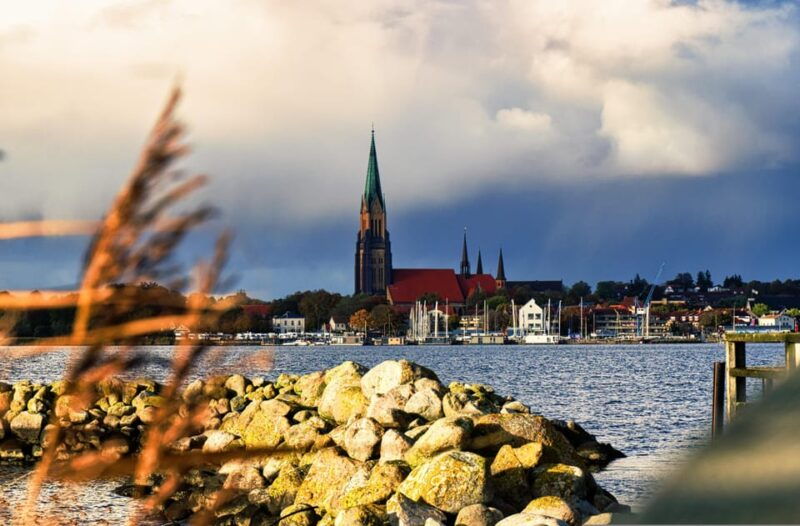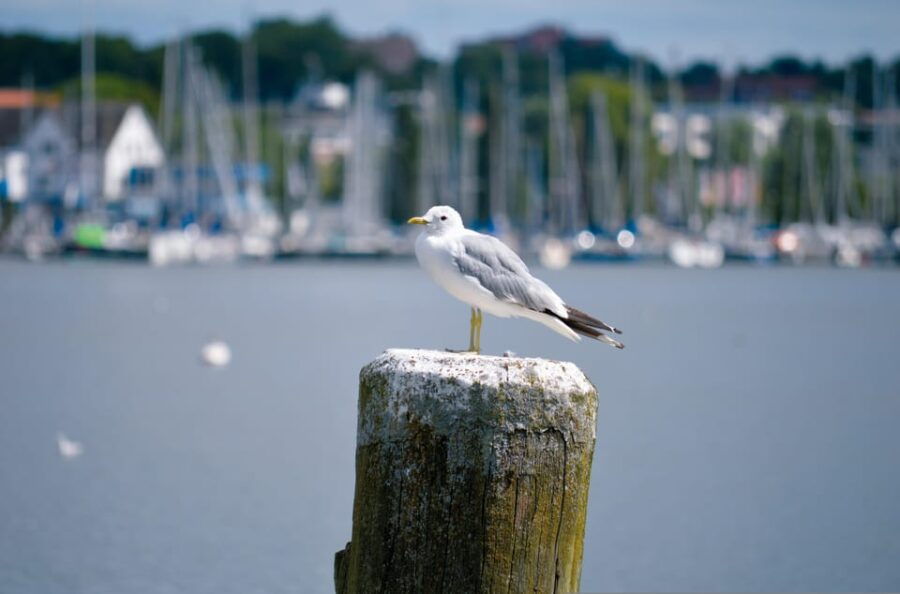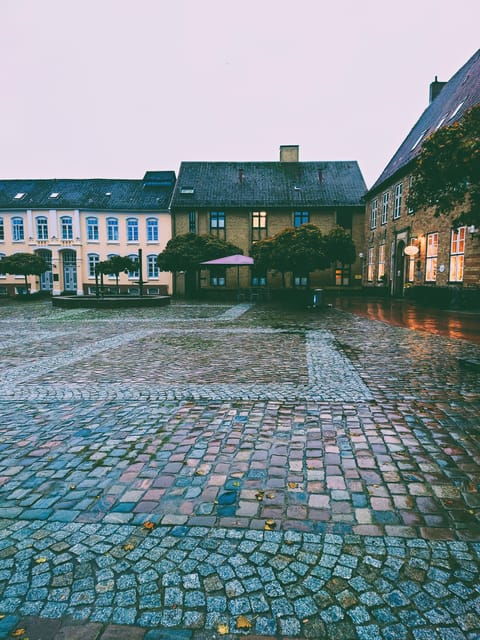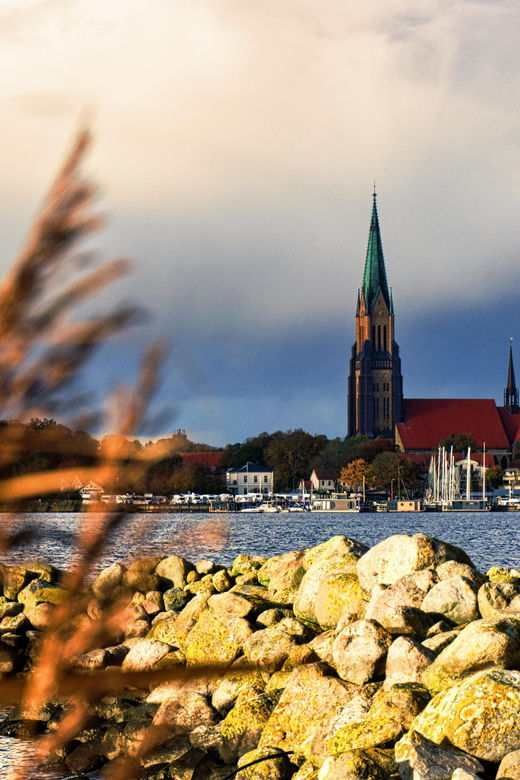Medieval Schleswig was a thriving commercial hub, where Vikings, kings, and cheeky monks intertwined their tales. This bustling trading port, nestled along the vital Schlei shipping route, connected diverse cultures and facilitated the exchange of goods. The majestic Schleswig Cathedral stood as a testament to Danish power, while local monasteries and fishing settlements added layers of religious and economic life. Uncover the captivating history that continues to intrigue visitors to this day.
Key Points
-
Schleswig emerged as a prominent medieval trading hub along the vital Schlei shipping route, facilitating the exchange of goods between Scandinavia, the Hanseatic League, and Europe.
-
The Schlei waterway was a crucial commercial artery for Schleswig, enabling the transportation of diverse cargoes like furs, timber, spices, and textiles.
-
Schleswig’s decline was attributed to shifts in trade routes, increased competition from other Baltic ports, political instability, and its inability to adapt to changing economic conditions.
-
The Schleswig Cathedral was a symbol of Danish power and influence in the region, serving as a venue for royal events and reflecting the city’s cultural and political significance.
-
Schleswig’s historical landmarks, such as the Holm fishing settlement, St. Johns Monastery, and the city harbor, offer insights into the medieval significance of the region.
Schleswig’s Prominence as a Medieval Trading Hub

During the early Middle Ages, Schleswig emerged as a prominent trading hub, its strategic location along the Schlei, a vital shipping route, propelling it to prominence.
Merchants from across Europe and beyond flocked to Schleswig’s bustling harbor, exchanging goods and forging vital commercial connections. The city’s thriving trade brought wealth and influence, making it a key player in the region’s economic landscape.
Schleswig’s significance as a trading center continued for centuries, only to wane in later years as shifts in trade routes and economic forces led to its gradual decline.
Looking for more options in Germany? We've reviewed plenty of other experiences.
The Vital Schleswig Shipping Route

The Schlei, a narrow inlet of the Baltic Sea, served as a vital shipping route for Schleswig during the medieval period. This waterway allowed merchants and goods to flow in and out of the bustling port city.
Schleswig’s strategic location made it a hub for trade between Scandinavia, the Hanseatic League, and the rest of Europe. Ships carried precious cargoes, from furs and timber to spices and textiles.
The Schlei’s importance as a commercial artery was crucial to Schleswig’s prosperity and influence during the Middle Ages, connecting it to the wider world beyond its shores.
Schleswig’s Decline and Historical Impact

Although Schleswig had flourished as a prominent trading center in the early Middle Ages, its prominence waned in subsequent centuries.
Several factors contributed to Schleswig’s decline:
-
The shift of trade routes away from the Schlei waterway
-
Increased competition from other Baltic ports
-
Political instability and conflicts between Denmark and Germany over control of the region
-
The devastating impact of the Thirty Years’ War on Schleswig’s economy and population
-
The city’s inability to adapt to changing economic and technological developments
This historical decline had a lasting impact on Schleswig, reducing its significance as a major trading hub in the region.
The Significance of Schleswig Cathedral to Danish Kings
Schleswig Cathedral held immense significance for Danish kings throughout the medieval period.
Situated in the heart of Schleswig, this grand cathedral was a symbol of Danish power and influence in the region. Danish monarchs often visited the cathedral, using it as a venue for royal events and ceremonies.
The cathedral’s association with the Danish crown solidified its importance, making it a cornerstone of Schleswig’s identity. Its towering spires and intricate architecture stood as a testament to the region’s close ties with the Danish monarchy, cementing Schleswig’s status as a key political and cultural center during the Middle Ages.
More Great Tours NearbyExploring Schleswig’s Historical Landmarks
As visitors stroll through Schleswig’s picturesque old town, they’ll discover a wealth of historical landmarks that offer a glimpse into the city’s rich past.
Some of the must-see sites include:
The Schleswig Cathedral, a stunning example of Brick Gothic architecture and a symbol of the city’s importance to Danish kings.
-
The Schleswig Cathedral, a stunning example of Brick Gothic architecture and a symbol of the city’s importance to Danish kings.
-
The Holm fishing settlement, where visitors can learn about the local fishermen’s rights, reaffirmed by King Christian I in 1480.
-
The well-preserved St. Johns Monastery, a key medieval site that provides insight into the city’s religious history.
-
The cozy city harbor, a testament to Schleswig’s once-thriving trade.
-
The engaging discussions led by knowledgeable guides, offering a deeper understanding of Schleswig’s medieval significance.
The Holm Fishermen and the Schleibrief

The Holm fishermen of Schleswig played a crucial role in the city’s maritime heritage.
They enjoyed special fishing rights along the Schlei, a vital shipping route in medieval times. These rights were reaffirmed in 1480 by King Christian I’s "Schleibrief" charter.
This document cemented the fishermen’s privileged status, allowing them to continue their livelihoods undisturbed.
The tour explores this little-known aspect of Schleswig’s history, shedding light on the interplay between the city’s fishing community and its ruling elite.
Visitors gain insights into the dynamic relationship that shaped the medieval landscape.
Uncovering the Secrets of St. Johns Monastery
Beyond the bustling harbor and picturesque old town, the tour leads visitors to the well-preserved St. Johns Monastery, a key medieval site in Schleswig.
The monastery offers a glimpse into the rich history of the region:
-
Established in the 13th century, it served as a significant religious and cultural center.
-
The Gothic architecture and well-maintained interiors provide a captivating setting for exploring the monks’ daily lives and the monastery’s role in Schleswig’s past.
-
Visitors can explore the monastery’s archives, uncover fascinating stories, and gain insights into the interplay between the monastic community and the surrounding town.
-
The tour guide’s expertise brings these historical narratives to life, painting a vivid picture of Schleswig’s medieval heritage.
-
Exploring St. Johns Monastery offers a unique opportunity to take in the captivating past of this medieval trading hub.
Frequently Asked Questions
Is the Tour Offered in Any Other Languages Besides German?
The tour is only offered in German. The tour overview does not mention it being available in any other languages.
Is There an Option to Extend the Tour Duration?
There’s no information provided about extending the tour duration. The tour is currently only offered as a 1.5-hour experience in German. The overview doesn’t mention any options to extend the length of the tour.
Are There Any Discounts Available for Students or Seniors?
There are no discounts specifically mentioned for students or seniors on this tour. However, it’s always worth checking with the tour operator to see if any discounts or promotional offers are available at the time of booking.
Can I Purchase Souvenirs or Local Products During the Tour?
The tour doesn’t include time for purchasing souvenirs or local products. However, you’ll have free time after the tour to explore Schleswig’s charming old town and visit local shops and markets on your own.
Is Photography Allowed Throughout the Tour Experience?
Photography is generally allowed throughout the tour experience. Visitors are encouraged to capture the scenic landscapes, historical landmarks, and cultural highlights encountered during the guided exploration of Schleswig’s medieval heritage.
The Sum Up
Medieval Schleswig was a vibrant center of trade, faith, and power. The Schleswig Cathedral embodied Danish influence, while monasteries and fishing villages added layers of cultural life. Though the region’s prominence waned over time, its rich history continues to captivate visitors, who can explore the area’s enduring landmarks and uncover the secrets of its storied past.
You can check availability for your dates here:More Tours in Germany
More Tour Reviews in Germany
- Cologne: Private Walking Tour with a Local
- Oberhausen: Virtual escape game adventure in the Centro area!
- “Ice-Cold Ghost Breath” a spooky tour that will make you smile.
- Kröv, Moselle: COVERED WAGON RIDE through the vineyards with wine tasting
- Berlin: The Cast the opera band: VIVA! 400 years of opera in 90 minutes
- Frankfurt: Private Walking Tour with a Local
Still browsing? Here are more Germany experiences we've covered recently
- Germany’s 6 Best Tours: Which To Choose?
- The 13 Best Tours & Experiences In Germany
- Cologne: Private Walking Tour with a Local
- Oberhausen: Virtual escape game adventure in the Centro area!
- “Ice-Cold Ghost Breath” a spooky tour that will make you smile.
- Kröv, Moselle: COVERED WAGON RIDE through the vineyards with wine tasting
- Berlin: The Cast the opera band: VIVA! 400 years of opera in 90 minutes
- Frankfurt: Private Walking Tour with a Local
- Münster-Highlights-Tour with Rickshaw-Guide
- Munich: Classical Concert at the Residenz Palace
- Berlin: Explaining Nazism Walking Tour
- City tour/sightseeing Kassel fall/winter 2026
